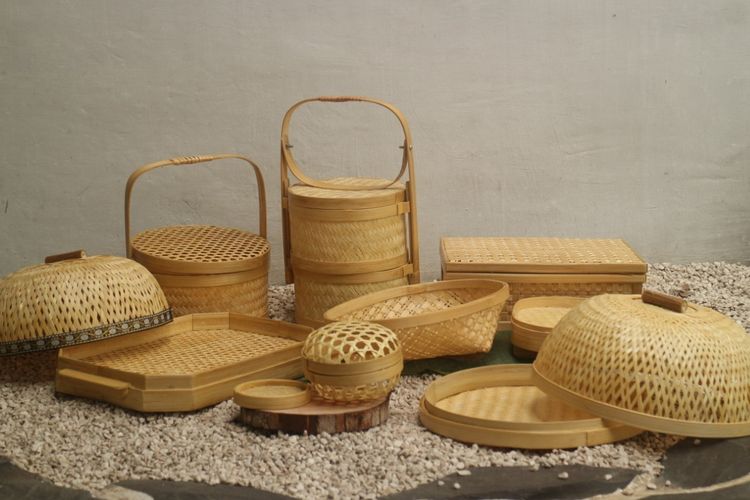Balinese Handicrafts Experiencing Further Growth at Present to Intrernational Market.
Balinese handicrafts are becoming increasingly popular on the international stage. Bali, as a global tourist destination, boasts a variety of unique local crafts that are highly sought after by tourists, whether for souvenirs or business purposes. Indeed, the Island of the Gods is home to numerous Balinese handicrafts or cottage industries that are often showcased in various shops and art markets. These products from home industries are quite popular among tourists, especially foreigners, who highly appreciate handcrafted items that are not mass-produced by machines. As a result, the distinctive crafts of Bali have a relatively high export value.
To discover these distinctive Balinese handicrafts, you can visit several art markets in Bali. These markets source their products directly from artisans, enabling them to offer more affordable prices. Some notable art markets include Kumbasari Market, Sukawati Market, Guwang Market, Ubud Market, and Kuta Market. Additionally, these crafts are also displayed in modern souvenir shops such as Krisna, Hawaii Bali, Dewata Bali, and Erlangga. Souvenir markets are a must-visit attraction for tourists participating in tours in Bali, providing a shopping destination to explore various Balinese handicrafts.
Several Unique Balinese handicrafts you can find when you are holiday in Bali.
The diverse range of Balinese crafts for sale comes from various artisans on the Island of the Gods, enriching the choices for tourists seeking local handmade goods.
1. Balinese Paintings:
Balinese paintings are indeed special, characterized by distinctive features that make them easily recognizable wherever they are displayed. The strokes are clear and expressive, often depicting Balinese social life, dancers, and nature. These paintings are readily found in several art markets, particularly in Sukawati and Ubud. The village of Kamasan specializes in producing Wayang paintings, which have their own unique character of Balinese handicrafts.
2. Gold and Silver:
The villages in Celuk, Gianyar, are renowned for Bali gold and silver crafts. These artistic and high-quality cottage industries are highly sought after by tourists and businesses alike, leading to international market penetration. Local artisans excel in crafting various items, from earrings, brooches, rings, and bracelets to ceremonial tools and sculptures. Another crafting hub is the village of Budekeling in Karangasem, which is also a popular tourist destination in Bali.
3. Balinese masks:
Balinese Mask especially those used in dance performances such as Sidakarya, Barong, and Randa, hold significant cultural value. These sacred masks undergo specific rituals during their creation, reflecting the characters portrayed in religious ceremonies and entertainment performances like Bondres. Various types of Balinese masks are available in the market, with many Bali handicrafts manufacturers in the village of Singapadu.
4. Endek and Songket:
Fabrics Essential for the local Hindu population’s traditional attire, Endek and Songket fabrics from Bali are economically valuable. Crafting these high-quality textiles, especially Songket with gold and silver threads combined with silk, is time-consuming, resulting in a higher price tag. Craftsmen in Sidemen, Karangasem, and Sulang, Klungkung, are known for their exceptional weaving skills.
5. Coconut Shell Crafts :
Another popular Balinese handicrafts is coconut shell waste can be transformed into artistic and economically valuable items. In the hands of creative craftsmen, coconut shells become sought-after products, including trays, bags, buttons, decorative lamps, hairpins, spoons, and various kitchen utensils. Tampaksiring is one of the places known for crafting items from coconut shells and is also home to the popular Tirta Empul tourist attraction.
6. Weaving Balinese:
Weaving Balinese woven crafts, made from bamboo, lontar leaves, pandan, rattan, straw, and ata, are not only used for daily needs by the local community but also have international market potential. Items such as baskets, bins, bags, mats, and traditional woven chairs find a place in both ceremonies and households. Craftsmen skillfully use readily available materials, turning them into economically valuable products.
7. Balinese sculptures:
Balinese sculptures craft require unique skills, especially when combined with intricate carvings. These artistic creations can take the form of beautiful carvings on wood or stone. Batubulan village is known for stone sculptures, while Mas village in Gianyar produces wooden sculptures and carvings. Gianyar is renowned as the art hub of Bali, excelling in carving, sculpture, and painting.
If you need Balinese crafts for souvenirs, visiting art markets or modern souvenir shops would suffice. However, for Balinese handicrafts wholesale, consider reaching out directly to the craftsmen. We, at balinesehandicrafts.com, are a community of artisans in Karangasem, Bali, ready to assist you.

